Carbene intermediates are produced by the photolysis of diazomethane (CH2N2) or kenene (CH2=C=O). They are also produced by the reaction of CHX3 with base or by Simmons-Smith reaction. There are two types of carbenes, singlet and triplet. They are so called due to their spin state.
Singlet and triplet carbene are same in :
Types of hybridisation
Number of unshared ¯e pairs (or LP¯e,s)
Number of σ−bonds
Bond angle
The correct Answer is:C
To solve the question regarding the similarities between singlet and triplet carbenes, we will analyze the properties of both types of carbenes step by step.
1. Understanding Carbenes:
- Carbenes are neutral species containing a carbon atom with only six valence electrons, resulting in a divalent state. They can exist in two forms: singlet and triplet.
2. Singlet Carbene:
- In singlet carbenes, both of the valence electrons occupy the same orbital, leading to a paired state.
- Example: The structure of singlet carbene can be represented as R2C: where the colon indicates the lone pair of electrons.
3. Triplet Carbene:
- In triplet carbenes, the two valence electrons occupy different orbitals, leading to an unpaired state.
- Example: The structure of triplet carbene can be represented as R2C with one electron in one orbital and another in a different orbital.
4. Hybridization:
- Singlet carbenes typically exhibit sp² hybridization, while triplet carbenes can exhibit either sp or sp² hybridization.
- Since they differ in hybridization, this means they do not share this property.
5. Number of Unshared Electron Pairs:
- Both singlet and triplet carbenes have no lone pairs of electrons. However, singlet carbenes have paired electrons, while triplet carbenes have two unpaired electrons.
- Therefore, they do not share this property either.
6. Number of Sigma Bonds:
- Both singlet and triplet carbenes have the same number of sigma bonds. This is a key similarity between the two types of carbenes.
- For example, both can form two sigma bonds with substituents.
7. Bond Angles:
- The bond angles in singlet and triplet carbenes differ due to their different hybridization states. Therefore, they do not share this property.
Conclusion:
From the analysis, we conclude that the only property that singlet and triplet carbenes share is the number of sigma bonds.
Final Answer:
Singlet and triplet carbenes are the same in the number of sigma bonds.
- Carbenes are neutral species containing a carbon atom with only six valence electrons, resulting in a divalent state. They can exist in two forms: singlet and triplet.
- In singlet carbenes, both of the valence electrons occupy the same orbital, leading to a paired state.
- Example: The structure of singlet carbene can be represented as R2C: where the colon indicates the lone pair of electrons.
- In triplet carbenes, the two valence electrons occupy different orbitals, leading to an unpaired state.
- Example: The structure of triplet carbene can be represented as R2C with one electron in one orbital and another in a different orbital.
- Singlet carbenes typically exhibit sp² hybridization, while triplet carbenes can exhibit either sp or sp² hybridization.
- Since they differ in hybridization, this means they do not share this property.
- Both singlet and triplet carbenes have no lone pairs of electrons. However, singlet carbenes have paired electrons, while triplet carbenes have two unpaired electrons.
- Therefore, they do not share this property either.
- Both singlet and triplet carbenes have the same number of sigma bonds. This is a key similarity between the two types of carbenes.
- For example, both can form two sigma bonds with substituents.
- The bond angles in singlet and triplet carbenes differ due to their different hybridization states. Therefore, they do not share this property.
From the analysis, we conclude that the only property that singlet and triplet carbenes share is the number of sigma bonds.
Singlet and triplet carbenes are the same in the number of sigma bonds.
Topper's Solved these Questions
- GENERAL ORGANIC CHEMISTRYBOOK - CENGAGE CHEMISTRY ENGLISHCHAPTER - GENERAL ORGANIC CHEMISTRYEXERCISE - Multiple Correct
22 Videos
- GENERAL ORGANIC CHEMISTRYBOOK - CENGAGE CHEMISTRY ENGLISHCHAPTER - GENERAL ORGANIC CHEMISTRYEXERCISE - Single Correct
23 Videos
- GENERAL ORGANIC CHEMISTRYBOOK - CENGAGE CHEMISTRY ENGLISHCHAPTER - GENERAL ORGANIC CHEMISTRYEXERCISE - Concept
17 Videos
- CLASSIFICATION AND NOMENCLATURE OF ORGANIC COMPOUNDSBOOK - CENGAGE CHEMISTRY ENGLISHCHAPTER - CLASSIFICATION AND NOMENCLATURE OF ORGANIC COMPOUNDSEXERCISE - Analytical and Descriptive Type
3 Videos
- HYDROGEN, WATER AND HYDROGEN PEROXIDEBOOK - CENGAGE CHEMISTRY ENGLISHCHAPTER - HYDROGEN, WATER AND HYDROGEN PEROXIDEEXERCISE - Subjective Archive (Subjective)
3 Videos
Similar Questions
Carbene intermediates are produced by the photolysis of diazomethane (CH2N2) or ketene (CH2=C=O). They are also produced by the reaction of CHX3 with base or by Simmons-Smith reaction. There are two types of carbenes, singlet and triplet. They are so called due to their spin state.
Spin state of carbene is determined by using the formula :
where S is the sum of all electron spin numbers.
View SolutionCarbene intermediates are produced by the photolysis of diazomethane (CH2N2) or kenene (CH2=C=O). They are also produced by the reaction of CHX3 with base or by Simmons-Smith reaction. There are two types of carbenes, singlet and triplet. They are so called due to their spin state.
Which carbene is produced in the following reactions ?
 .
.
View Solution
Knowledge Check
Which type of intermediate (A) is formed during the reaction?
CH3CH2−N=N−CH2CH3heat−−→(A)+N2ACarbocationBCarbanionsCFree radicalDCarbeneThe addition reaction of enol or enolate to the carbonyl function of aldehyde or ketone is known as aldol addition. The β- hydroxyaldehyde or β- hydroxyketone so obtained undergo dehydration in second steo to produce a conjugated enone. The first part of reaction is an addition reaction and the second part is an elimination reaction. Carbonyl compound having α- hydrogen undergoes aldol condensation reaction.
2CH3CH2−O∣∣C−HϴOH−−−−−→ΔCH3CH2CH=C∣CH3−O∣∣C−H
Mechanism:

Find out product of following reaction

X isACH3−CH=CH−O∣∣C−PhB CPh−O∣∣C−CH=C∣Ph−CH3DNone of these
CPh−O∣∣C−CH=C∣Ph−CH3DNone of theseThe addition reaction of enol or enolate to the carbonyl function of aldehyde or ketone is known as aldol addition. The β- hydroxyaldehyde or β- hydroxyketone so obtained undergo dehydration in second step to produce a conjugated enone. The first part of reaction is an addition reaction and the second part is an elimination reaction. Carbonyl compound having α- hydrogen undergoes aldol condensation reaction.
2CH3CH2−O∣∣C−HϴOH−−−−−→ΔCH3CH2CH=C∣CH3−O∣∣C−H
Mechanism:

Find out major product of following reaction:
 A
A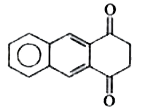 B
B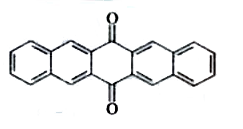 C
C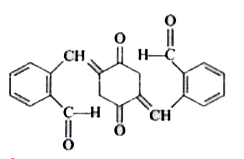 DNone of these
DNone of these
Carbene intermediates are produced by the photolysis of diazomethane (CH2N2) or kenene (CH2=C=O). They are also produced by the reaction of CHX3 with base or by Simmons-Smith reaction. There are two types of carbenes, singlet and triplet. They are so called due to their spin state.
In which reaction, the insertion of methylene increases potential energy ?
View SolutionCarbene intermediates are produced by the photolysis of diazomethane (CH2N2) or kenene (CH2=C=O). They are also produced by the reaction of CHX3 with base or by Simmons-Smith reaction. There are two types of carbenes, singlet and triplet. They are so called due to their spin state.
An optically active alkene (I) with lowest molecular mass on hydrogenation gives optically inactive alkene, but on insertion of methylene carbene (:CH2) in (I), it gives optically active compound (II). The compounds (I) and (II) are :
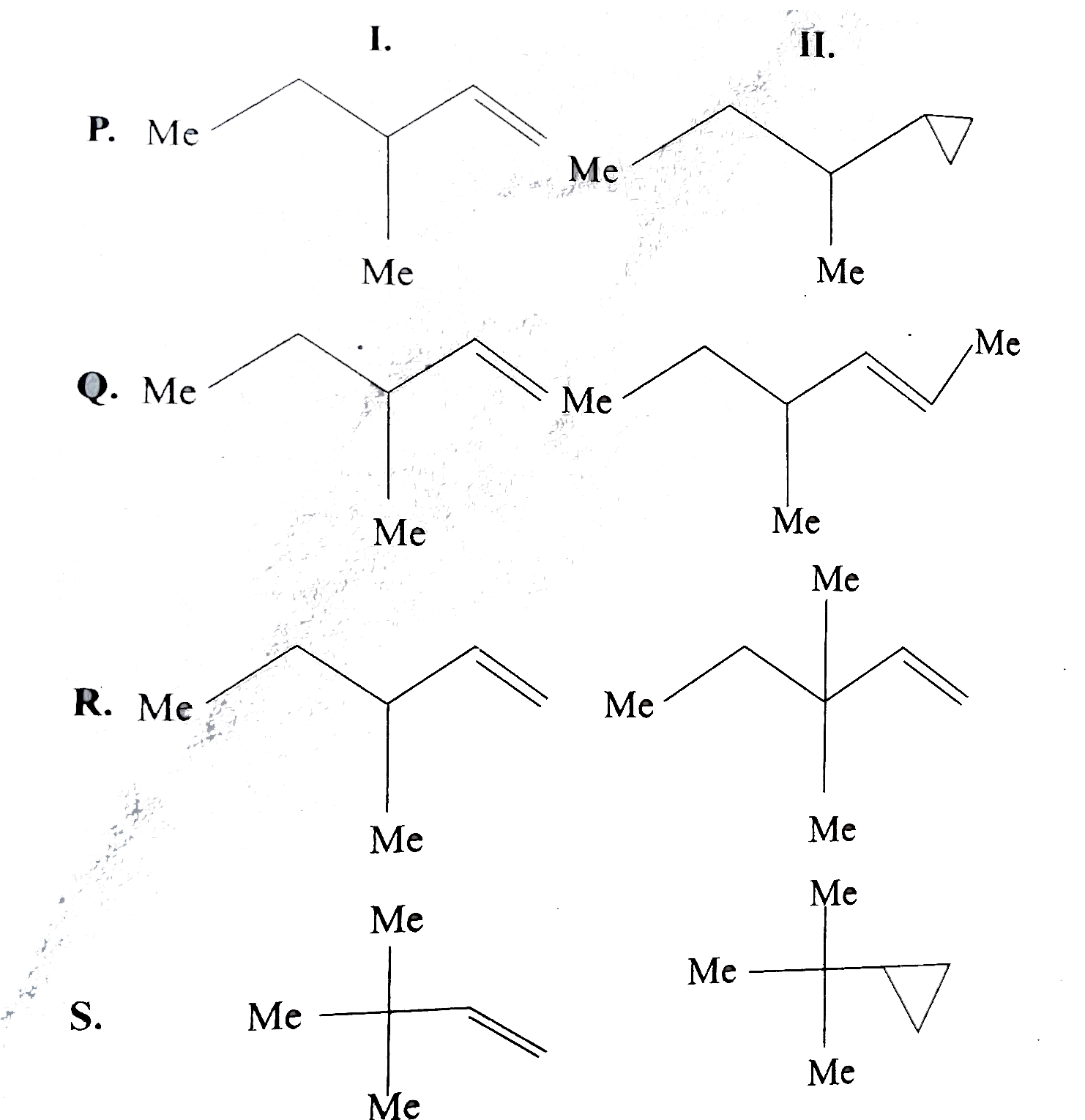 .
.
View SolutionFrom A:CO,B:CO2,C:NO2,D:SO3 – State which will not produce an acid on reaction with water.
View SolutionDescribe heterolytic (polar) bond cleavage of :
(i) Agl,
(ii) H3⊕NӨBF3,
(iii) [Cu(OH2)4]2⊕
(b) Name the reverse of heterolytic cleavage.
( c) Describe homolytic bond cleavage of CH3−Co−Co−CH3.
(d) Compare the relative energies of singlet and triplet carbenes.
( e) Of XC : (singlet) and X2C : (triplet), which is stable ?
(f) Of F2C:,C12C:,Br2C:,I2C: (singlet), which is more stable ?
(g) Compare and explain the difference in the IE and EA of ⋅CH3.
View SolutionThe addition reaction of enol or enolate to the carbonyl function of aldehyde or ketone is known as aldol addition. The β- hydroxyaldehyde or β- hydroxyketone so obtained undergo dehydration in second steo to produce a conjugated enone. The first part of reaction is an addition reaction and the second part is an elimination reaction. Carbonyl compound having α- hydrogen undergoes aldol condensation reaction.
2CH3CH2−O∣∣C−HϴOH−−−−−→ΔCH3CH2CH=C∣CH3−O∣∣C−H
Mechanism:
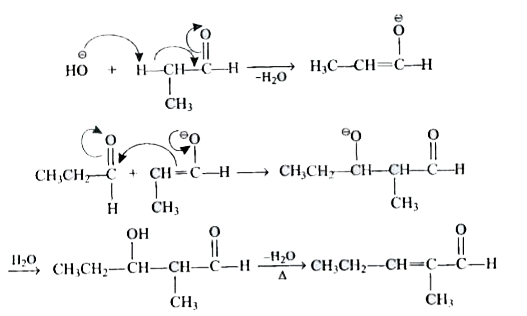
Whcih of the following will give aldol condensation?
View Solution
